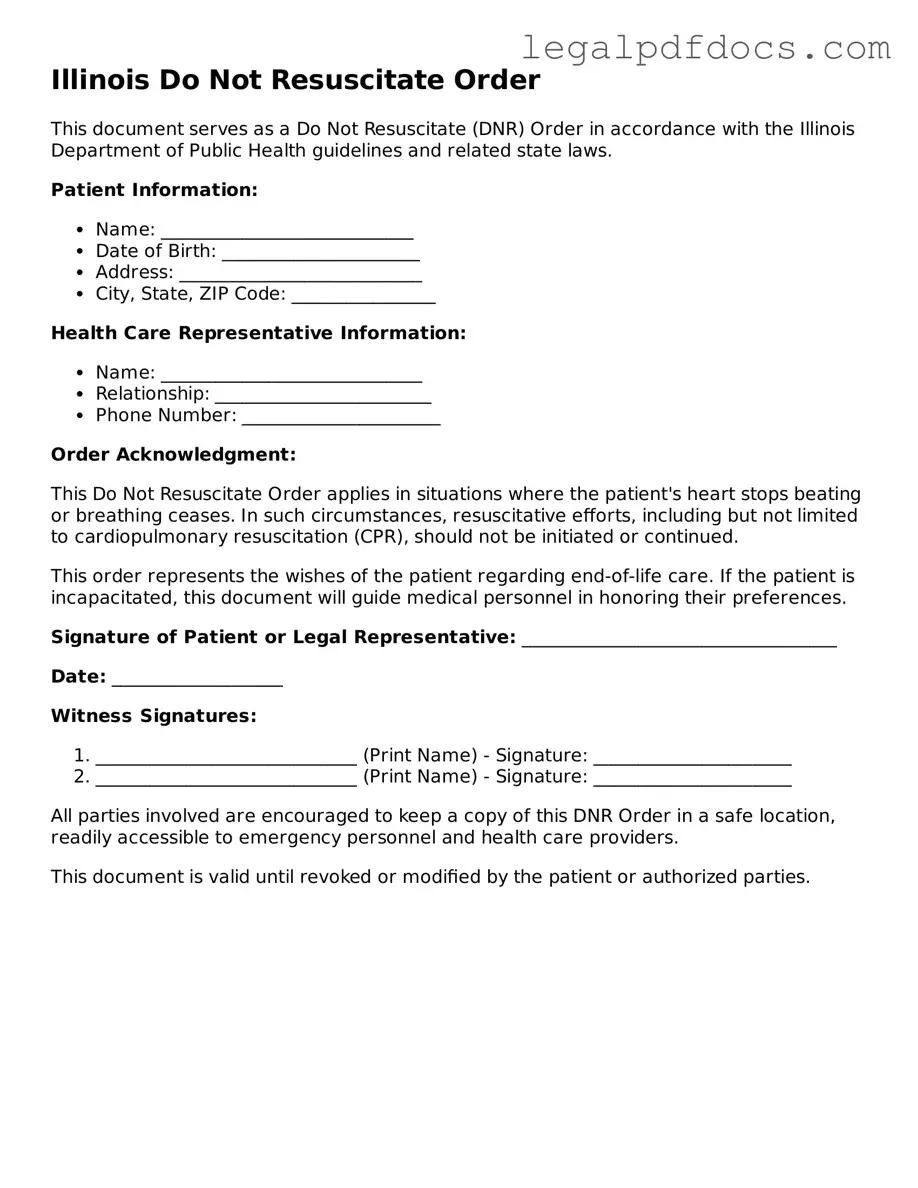Official Do Not Resuscitate Order Form for Illinois
A Do Not Resuscitate Order (DNR) form in Illinois is a legal document that allows individuals to refuse resuscitation efforts in the event of a medical emergency. This form serves as a clear directive for healthcare providers, ensuring that a person's wishes regarding life-sustaining treatment are respected. Understanding how to properly complete and utilize this form is crucial for anyone considering their end-of-life care options.
To take the next step in making your healthcare preferences known, fill out the form by clicking the button below.
Open Do Not Resuscitate Order Editor Here
